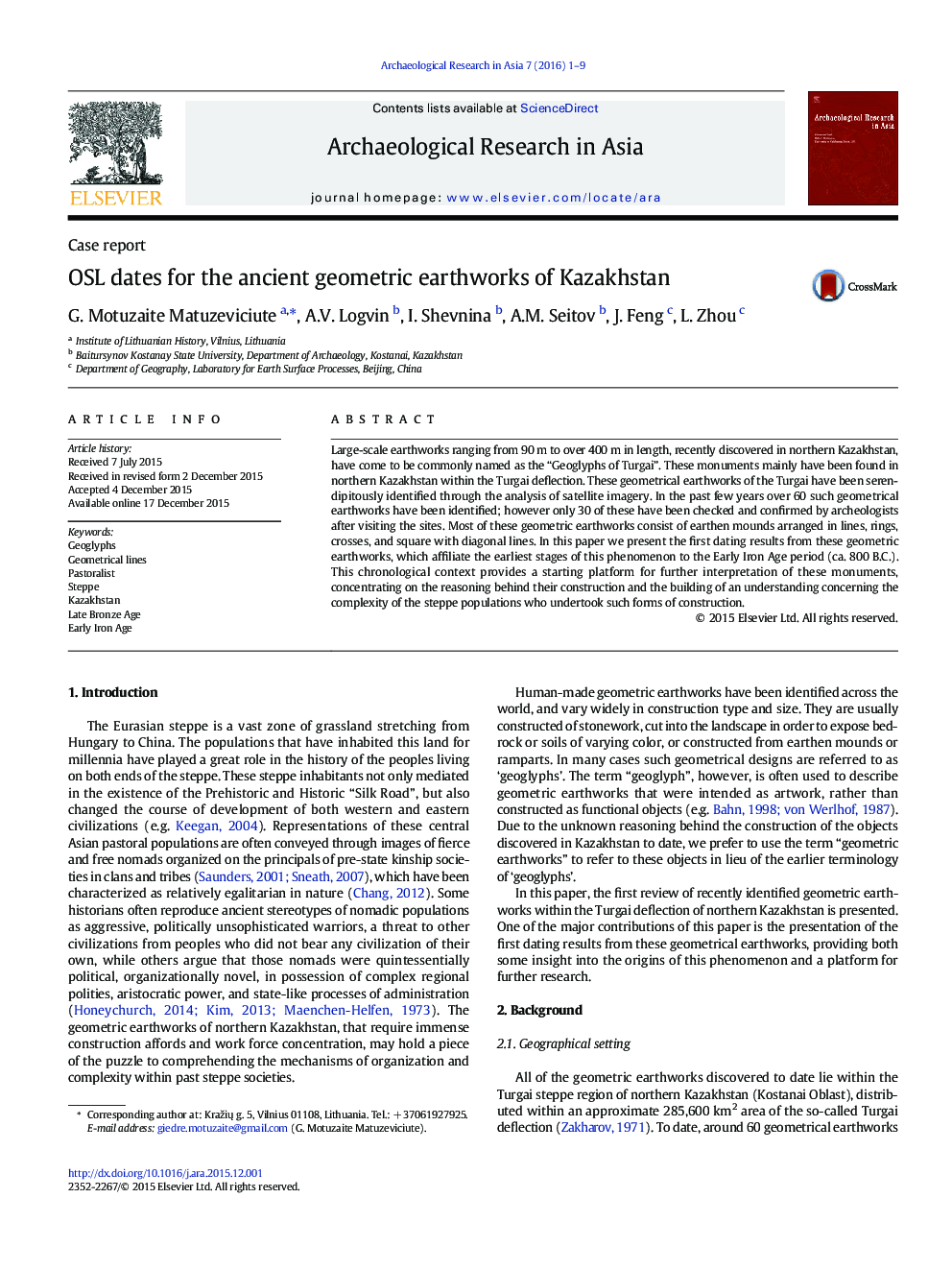| Article ID | Journal | Published Year | Pages | File Type |
|---|---|---|---|---|
| 1034136 | Archaeological Research in Asia | 2016 | 9 Pages |
Large-scale earthworks ranging from 90 m to over 400 m in length, recently discovered in northern Kazakhstan, have come to be commonly named as the “Geoglyphs of Turgai”. These monuments mainly have been found in northern Kazakhstan within the Turgai deflection. These geometrical earthworks of the Turgai have been serendipitously identified through the analysis of satellite imagery. In the past few years over 60 such geometrical earthworks have been identified; however only 30 of these have been checked and confirmed by archeologists after visiting the sites. Most of these geometric earthworks consist of earthen mounds arranged in lines, rings, crosses, and square with diagonal lines. In this paper we present the first dating results from these geometric earthworks, which affiliate the earliest stages of this phenomenon to the Early Iron Age period (ca. 800 B.C.). This chronological context provides a starting platform for further interpretation of these monuments, concentrating on the reasoning behind their construction and the building of an understanding concerning the complexity of the steppe populations who undertook such forms of construction.
